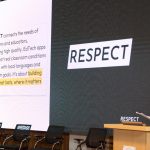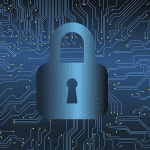March 14, 2021
Artificial Intelligence (AI) has become a trending technology and has impacted many sectors including education. The role of AI in education has certainly become debatable leading many to wonder whether AI will take over education to the detriment of teachers or whether it will indeed revolutionize education.

As an educator I sought to understand the very meaning of the concept of AI and all the associated terminology that is supposedly at the forefront of educational technology disruption. At first, it seemed like rocket science to me, so I sought to find someone who would breakdown this concept to me and why I should be interested in it as an educator. Unfortunately this search proved futile at first. Perhaps, I wasn’t asking or listening to the right people. So I took up a personal challenge to seek to gain understanding in a way that I could share it with a child, as Albert Einstein once said, “If you can’t explain it to a six year old, you don’t understand it yourself…”, meaning that if you are incapable of explaining it simply then you don’t understand it well enough.
So what is AI? In a simple form, it is a software imitating human capabilities and the understanding of how the world around us works. Just as we have the ability to reason and make decisions from what we know, AI makes decisions based on data and past experiences (Machine Learning). As humans, we also have the ability to sense when things are wrong and learn from our past mistakes. AI looks at historical data and then uses computational power to identify unusual changes and recognize abnormal events (Anomaly Detection). The same process is used to analyze patterns in data and use the results to predict future outcomes or implement preventive measure (Prediction/Forecasting). We also have the capacity to see the world, generate new data from what we see and communicate the same through speech and text, AI can generate data or extract information from any source, including graphics and images to categorize and process visual data (Computer Vision). AI can automate the translation process through its understanding of machine and spoken language (Natural Language Processing). This process is made fluid where AI engages in conversation with humans (Conversational AI).
These capabilities are what makes us human and this is what scientists and engineers have studied during this year to see how software can mimic these abilities. Today we are beginning to realize this dream at various major levels with many services reaching human parity in terms of capability and accuracy. AI is therefore becoming embedded within our daily life, empowering us to achieve more.
One of the critical areas that artificial intelligence is set to impact is education, however, as educators in order to not miss out on the positive impacts that this technology can have, we need to understand artificial intelligence at a deeper level.
RECOMMENDED: https://global-edtech.com/category/africa/
So How Can Teachers Be Assisted By AI
Teachers can use AI to better understand students by applying quantitative measures of learning and considering how learning evolves through the year/s, rather than basing decisions on a standardized test at the end of the year. A summative approach would not be reflective of what students have actually learned. AI can also help with various routines, from grading to handling documentation. Teachers can therefore pay attention to other duties and won’t need to focus on routine tasks as much, making it easier for them to concentrate on their students.
Authors like Kevin Nelson Matthew Lynch and Sameer Balaganur have listed some ways in which AI can assist teachers, these include
- AI can pinpoint the most effective pedagogical strategies, techniques, methods, etc. and the applications and contexts of learning that are needed for the next generation.
- AI can assist with extensive data collection and analytics tasks, which helps educators to find the most effective pedagogical and classroom management techniques for each individual student.
- AI can be used to create systems that will enable educators to track the progress of students in their classroom at an individual level. This includes measures that have historically been difficult for educators to assess, such as creativity and innovation.
- AI can be used to develop meaningful learning experiences such as gamified learning and project-based learning.
- Certain tasks can be made easier through the use of artificial intelligence. Grading, for example, can be done quickly and easily using artificial intelligence.
- AI provides support in a more efficient and time-saving manner so teachers can pay more attention to their students.
- AI also helps in providing global access to education for students.
- AI would be able to give all students detailed and personalized feedback and also help them with the educational process.
- AI can analyze data to identify the gaps and flaws within courses. For example, if all students struggle with a certain assignment or a certain part of the course, AI could spot that and do something to change it. For example, it may suggest the insertion of additional guidance.
Matthew Lynch also discusses Ways That Artificial Intelligence Helps Improve Student Outcomes noting that
- AI can assist with extensive data collection and analytics tasks, which helps educators to find the most effective pedagogical and classroom management techniques for each individual student.
- AI can provide just-in-time assessment by leveraging learning analytics and big data to find changes in confidence and motivation levels in individual students. This allows educators to administer timely interventions to support struggling students.
- AI can develop tools to assess a student’s level of understanding by analyzing how a student arrived at an answer. This gives educators a valuable insight into a student’s thought process, which can be used to develop personalized learning plans.
While a lot has been said about the positive impacts AI can have in education, issues have also been raised concerning the Negative Effects Of Artificial Intelligence In Education
Muhammad Adil raises issues regarding a decrease in human interaction in education, the possibility of rising unemployment in the teaching profession, the costs associated with the implementation and maintenance of robotic machines and artificial intelligence and the decrease in the thinking power of students and the raising of lazy students who become dependent on artificial intelligence.
Sameer Balaganur states that:
“With other essential aspects, one of the enormous problems artificial intelligence is facing is the problem of the bad data that has been given which has resulted in an even more significant problem, which we know as algorithm bias. And, this problem of algorithm bias has now crept into the education system too.”
Source: https://analyticsindiamag.com/is-ai-bias-algorithm-affecting-education-system/
AI learns from the data provided to it by the human being who designed it. The more bad data is fed to the algorithm, the more bias it will have. He concludes by stating that while artificial intelligence may have a very positive impact on the education system, the issue of algorithmic bias remains a common problem which ends up forcing people around the world to question the ability of AI to make our lives more comfortable.
Despite the negative concerns raised, AI supports the learning process in so many aspects and I don’t think that the worries about AI replacing teachers is founded, as AI still cannot fully replace teachers. Teachers don’t only offer knowledge but also teach social skills and teamwork.
Having said this, the process of AI and automation is going to drive mass unemployment and the modern workplace demands students to acquire a new skill set, like creativity, problem solving and computational thinking. Therefore, our education system has to change and the onus is on teachers. Today’s education should be designed to train young people to compete with machines by training them to nurture human potentials and what they can do better than machines, rather than memorizing academic material and regurgitating it in exams. We need young people to exercise the 21st century skills to confidently enter the workplace.










0 Comments